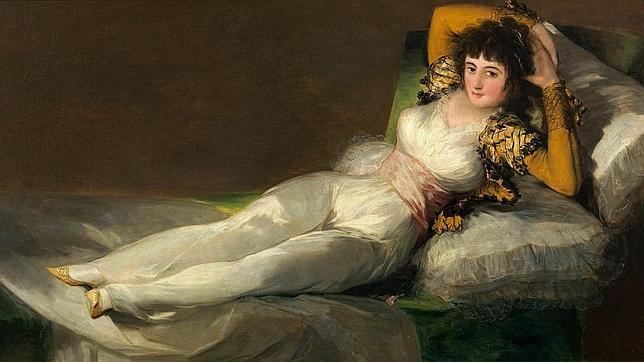GOYA: Portrait of a Painter
Last night, I saw the film Goya’s Ghosts – again. I still wonder why. It’s not a great film and I think it’s one of Javier Bardem’s worst performances, but on the other hand, Natalie Portman is in it and the film portrays the Spanish Inquisition perfectly and above all, it presents the great painter: GOYA.
Goya is one of the greatest painters in Spanish history, alongside Velázquez, Picasso and Dalí. The film industry has taken a particular interest in Goya and he is the most portrayed Spanish artist in film. I think my favourite movie about him is Goya in Bordeaux (Carlos Saura, 1999). His relationship with the powerful Duchess of Alba always fascinated me; were they lovers? We’ll never know.
Francisco José de Goya y Lucientes (30 March 1746 – 16 April 1828) is a difficult character to portray; he is a man who is many men. Through his art we are offered the chance to see the many faces of Goya.
His tapestries show us a popular and costumbrista Goya who depicted the way of life of Spanish people, their traditions and festivities. The passionate Goya, infatuated with the Duchess of Alba, is seen in his painting of a naked woman (La maja desnuda). The Goya who was critical of the Church and the Inquisition appears in his drawings Los Caprichos. In this series of drawings, he also criticises the Spanish society for their vices and superstitions. Through his art we also see how Goya bore witness to the horrors of the War of Independence and we learn of the tormented and disappointed Goya that comes through in his Pinturas Negras (Black Paintings), which were murals painted on the walls of his home depicting disturbing themes.
For all the attempts filmmakers have made to portray Goya, none have managed to present him in the way he presented himself within the Spanish society during the late 18th and early 19th Century. He was such a successful portrait artist, that he was appointed as the Painter of the King and to be painted by Goya became the fashion for the wealthy and noble members of society. His studio was always crowded with clients, which comes as a surprise considering he never flattered any of his subjects. He painted them as they were – in all their physical imperfections and with all their moral shortcomings.
However, his portraits weren’t exclusively for the Aristocracy; he also depicted the restless life of the city, he swam like a fish through all levels of its society, from the royal family to street beggars. He was a keen observer of humanity and that’s why his paintings are such important access to the history, traditions and people of the Spain of his time.
Due to this importance, the National Gallery created an exhibition of his portraits, but for those who missed the opportunity to see these paintings, they also made a film about the exhibition: Goya: Visions of Flesh and Blood.
https://www.youtube.com/watch?v=xpLA9X0gBeU
Vamos Let's Learn Spanish. Spanish courses in London. Spanish courses in Valencia.
¿Cuánto sabes? / Tell us what you think
Your email address will not be published. Required fields are marked *
You must be logged in to post a comment.













Muy interesante, Elena! Gracias 🙂
¡Muchas gracias Elena! Fantástico, como siempre.
Elena, por fin he tenido un momentito para leer tu artículo y me ha encantado, como siempre 🙂
Estoy totalmente de acuerdo contigo, gracias a sus pinturas podemos conocer la historia de nuestro país mucho mejor, además es la mejor forma de comprender visualmente todo tipo de detalle que aconteciese.
Goya en Burdeos es una película fantástica, la ha visto varias veces y me sigue gustando igual: cómo representa su vida de principio a fin. Aunque como dices, ¡nadie ha descrito su vida tan bien como él mismo lo hizo con sus trabajos!
Excelente, sigue escribiendo así 🙂